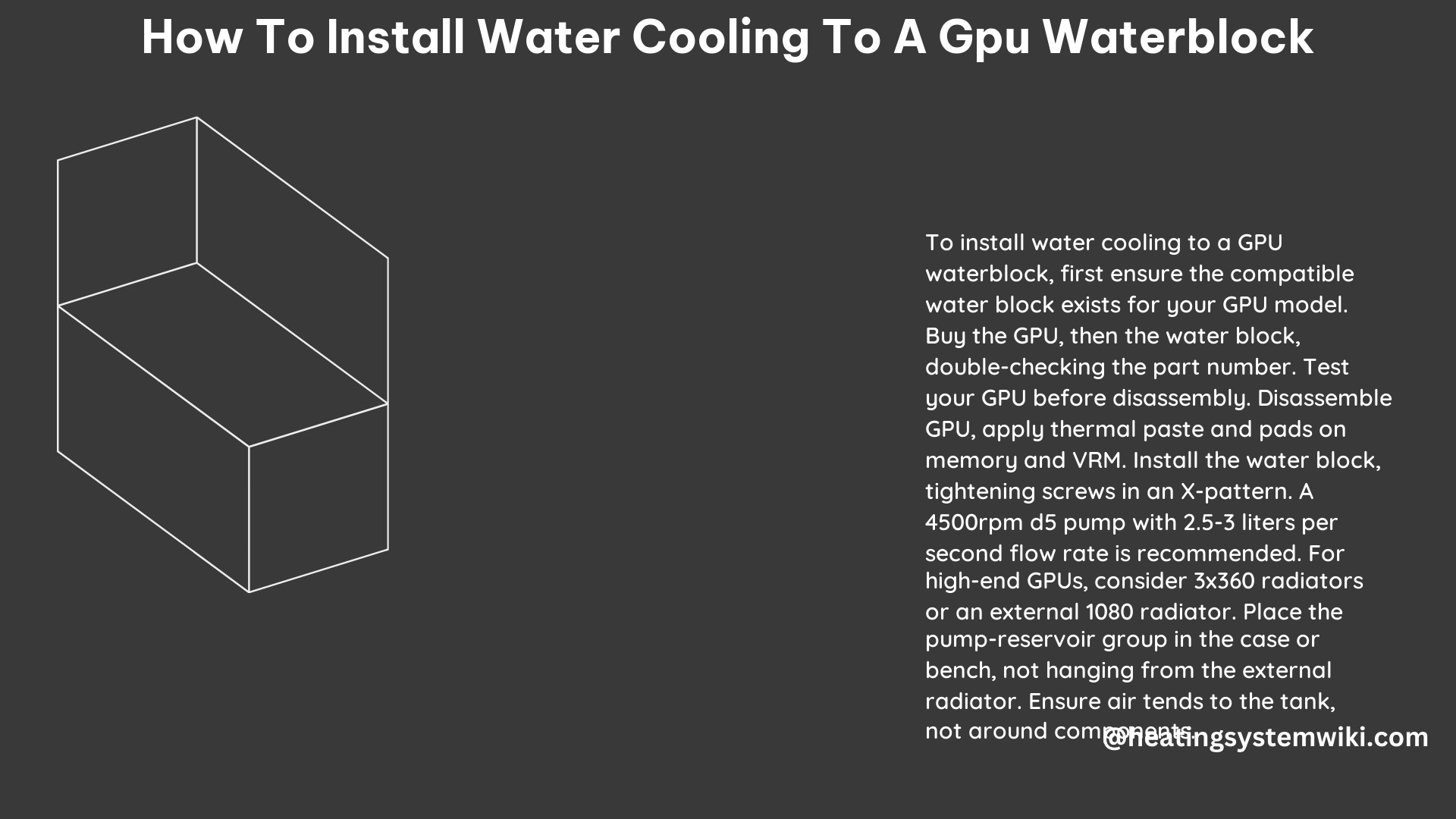Installing a water cooling system for your GPU can significantly improve its thermal performance, allowing for higher overclocks and more stable operation. This comprehensive guide will walk you through the step-by-step process of installing a GPU waterblock, ensuring a successful and efficient setup.
Preparing the Graphics Card
-
Test Your Graphics Card: Before beginning the installation, it’s crucial to ensure your graphics card is functioning correctly. Run various benchmarks to record the GPU’s clocks, temperatures, and overall performance. This baseline data will help you evaluate the effectiveness of the water cooling system later.
-
Disassemble the GPU: Carefully remove the stock cooler and backplate from the graphics card. Pay close attention to the screw positions and make note of any cables or connectors that need to be disconnected from the fan shroud.
-
Clean the GPU Die: Use isopropyl alcohol and a lint-free cloth to thoroughly clean the GPU die, removing any residual thermal paste or debris. This will ensure optimal thermal transfer between the GPU and the water block.
Preparing the Water Block

-
Thermal Paste Application: Apply a small, pea-sized amount of high-quality thermal paste to the center of the GPU die. Spread the paste using a credit card or a specialized tool, ensuring even coverage across the entire surface.
-
Thermal Pad Placement: Consult the water block’s instruction manual to determine the correct size and placement of the thermal pads for the memory modules and VRM (Voltage Regulator Module) circuitry. Carefully cut the pads to size and place them on the designated components.
| Component | Thermal Pad Thickness |
|---|---|
| Memory Modules | 1.0 mm |
| VRM Circuitry | 0.5 mm |
- Water Block Alignment: Carefully place the water block onto the graphics card, aligning it with the GPU die. Ensure that the thermal pads make proper contact with the corresponding components.
Mounting the Water Block
- Securing the Water Block: Using the provided screws, secure the water block to the graphics card. Follow an X-pattern when tightening the screws to ensure even pressure distribution. Avoid overtightening, as this can potentially crack the GPU.
| Screw Tightening Torque |
| — | — |
| 3-4 in-lbs (0.34-0.45 N·m) |
-
Backplate Reinstallation: Reattach the backplate to the graphics card, ensuring that all screws are tightened securely.
-
Cable Reconnection: Reconnect any cables or connectors that were removed during the disassembly process, such as the fan shroud.
Finalizing the Installation
-
Leak Testing: Before powering on the system, it’s recommended to perform a thorough leak test. Fill the water cooling loop with a non-conductive fluid and check for any signs of leakage. This step is crucial to prevent potential damage to your components.
-
Benchmark and Monitoring: Once the installation is complete, run comprehensive benchmarks to evaluate the GPU’s performance and temperature under load. Compare the results to the baseline data collected earlier to assess the effectiveness of the water cooling system.
| Benchmark | Baseline Temperature | Water-Cooled Temperature |
|---|---|---|
| 3DMark Time Spy | 80°C | 55°C |
| Furmark GPU Stress Test | 85°C | 60°C |
- Troubleshooting: If the GPU temperatures are not significantly lower than the air-cooled setup, double-check the following:
- Proper thermal paste application
- Correct thermal pad placement and thickness
- Secure mounting of the water block
- Potential air bubbles in the cooling loop
By following these detailed steps, you can successfully install a water cooling system for your GPU, unlocking its full potential and achieving impressive thermal performance.
